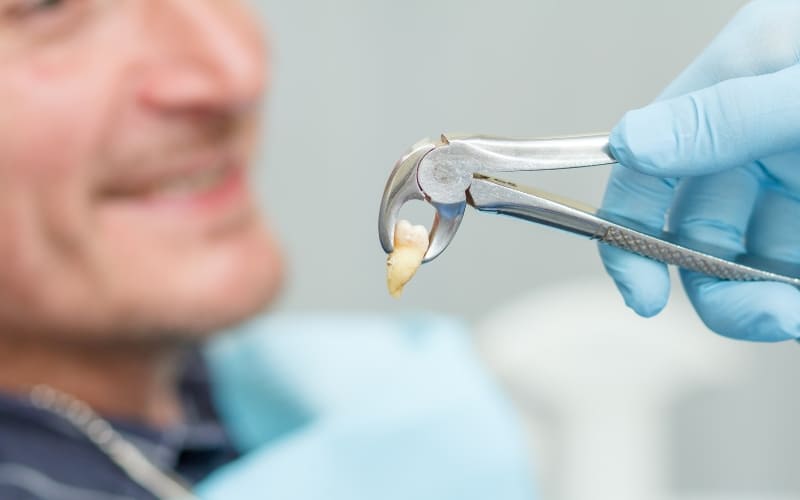
Wisdom Tooth Extraction
Wisdom tooth extraction is a common dental procedure that involves the removal of one or more wisdom teeth, also known as third molars. Wisdom teeth are the last set of molars that usually emerge in late adolescence or early adulthood. Due to various reasons, such as impaction, inadequate space, or improper alignment, wisdom teeth may need to be extracted.
Wisdom tooth extraction process:
Before recommending wisdom tooth extraction, the dentist or oral surgeon will conduct a thorough examination, which may include X-rays, to assess the position, size, and development of the wisdom teeth.
To ensure the patient’s comfort during the procedure, local anesthesia is typically administered to numb the affected area. In some cases, conscious sedation or general anesthesia may be used, especially if multiple wisdom teeth are being extracted or if the extraction is expected to be more complex.
In cases where a wisdom tooth is partially or fully impacted (unable to fully emerge from the gum), the dentist may need to make a small incision in the gum tissue to access the tooth. Sometimes, a portion of the bone covering the tooth may need to be removed.
Using dental instruments, the dentist or oral surgeon carefully loosens the tooth within its socket and removes it. In some cases, the tooth may be divided into smaller sections for easier extraction.
After the extraction, the dentist may clean the extraction site, remove any debris, and may place a gauze pad to help control bleeding. In some cases, the socket may be left open to heal naturally.
Depending on the complexity of the extraction, the dentist may use dissolvable stitches to close the incision in the gum. Some extractions may not require stitches.
The dentist provides post-extraction care instructions, including information on managing pain, swelling, and bleeding. Patients are typically advised to avoid certain activities, such as smoking or using a straw, to prevent complications.
Patients may be scheduled for a follow-up appointment to monitor healing and ensure there are no complications.
Full recovery from wisdom tooth extraction varies, but most people can resume normal activities within a few days. It’s essential to follow post-operative care instructions and attend follow-up appointments.
Complications from wisdom tooth extraction are generally rare, and the procedure is often routine. However, as with any surgical procedure, there are potential risks and considerations. Patients should communicate any concerns with their dentist or oral surgeon and follow their advice for optimal recovery.
